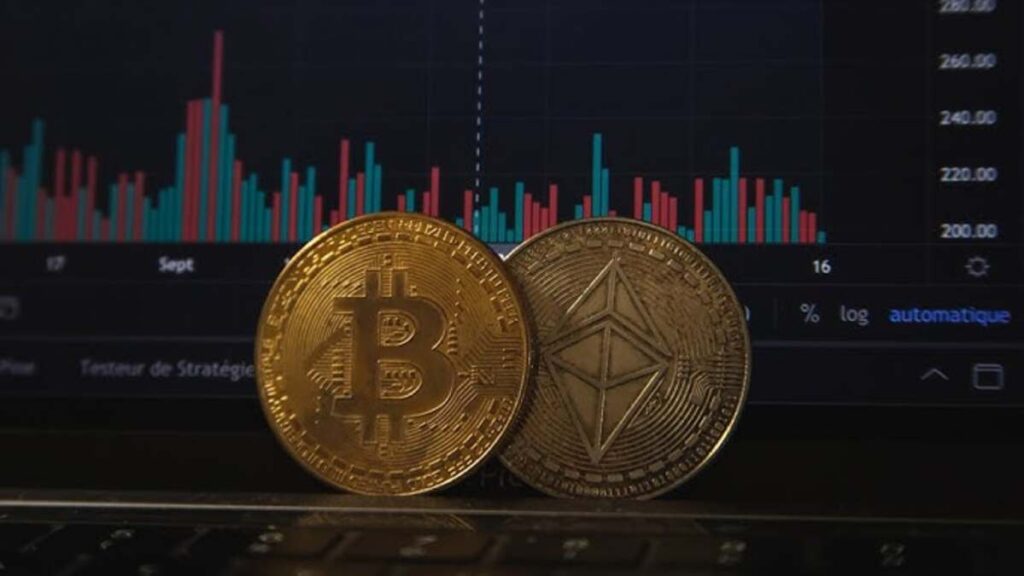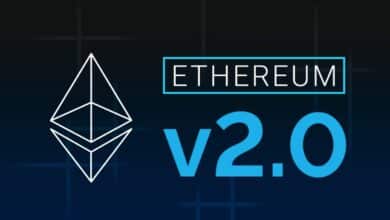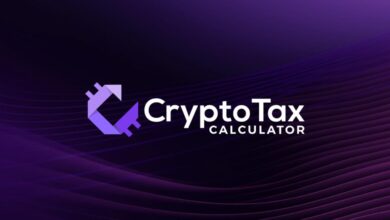Cryptocurrencies for Trading: The Best Powerful Coins

Cryptocurrencies for Trading Best Cryptocurrency for Trading Cryptocurrency trading has evolved from a niche hobby to a major investment avenue that attracts everyone from individual day traders to large institutional investors. With over 20,000 cryptocurrencies on the market, knowing the best options for trading can make a huge difference in your profitability. This article provides an in-depth guide to the top cryptocurrencies for trading in 2024, focusing on factors like liquidity, volatility, market trends, and then future growth potential.
With a 3000-word overview, we will explore the fundamentals of each leading cryptocurrency, discuss the advantages of each, and then provide insights into their trading potential in 2024.
Understanding the Criteria for Selecting Cryptos for Trading
Before diving into the list, it’s essential to understand then key factors that make a cryptocurrency a solid choice for trading:
- Liquidity: High liquidity means that a coin can be traded in large volumes with minimal slippage. This is crucial for active traders who need fast and then efficient trade executions.
- Volatility: Volatility can be both a risk and then an opportunity. High volatility provides opportunities for profit in the short term, while more stable coins offer predictability.
- Market Capitalization and then Stability: Coins with a large market cap tend to have less volatility and a more stable price pattern, making them easier to predict.
- Popularity and Trading Volume: High trading volume is indicative of a coin’s popularity and ensures there’s enough movement for regular trading activities.
- Technology and Adoption Potential: Coins with robust technological fundamentals and then real-world adoption potential often offer long-term growth, appealing to swing traders and then long-term holders alike.
With these criteria in mind, let’s delve into the top cryptocurrencies for trading in 2024.
1. Bitcoin (BTC): The Cornerstone of Cryptocurrency Trading

Bitcoin (BTC), often referred to as the king of cryptocurrencies, continues to dominate the market and is a must-have in any trading portfolio. As the first cryptocurrency, Bitcoin enjoys a vast network effect, high liquidity, and then is widely accepted across global exchanges.
Key Attributes of Bitcoin for Trading
- Liquidity: Bitcoin has unparalleled liquidity, which means traders can quickly buy or sell large quantities without a significant impact on price.
- Volatility: While Bitcoin’s price tends to fluctuate, it has become more predictable over time, offering traders numerous opportunities for profit.
- Market Dominance: Bitcoin’s high market cap and then established status make it a relatively safer investment compared to newer altcoins.
- Institutional Investment: Institutional interest in Bitcoin has grown, adding stability to its price and then ensuring consistent trading volume.
Trading Strategies for Bitcoin
Bitcoin is suitable for a wide range of trading strategies. Day traders often leverage its frequent price movements, while swing traders may look for medium-term opportunities during Bitcoin’s periodic cycles. HODLers (long-term investors) often use Bitcoin as a store of value, banking on its potential as digital gold.
2. Ethereum (ETH): The Smart Contract Leader
Ethereum (ETH) is the second-largest cryptocurrency by market cap and the dominant player in the smart contract space. Known for its robust developer community, Ethereum has pioneered the blockchain ecosystem and then serves as the foundation for numerous decentralized applications (dApps).
Advantages of Ethereum for Trading
- Strong Liquidity and then Market Cap: Like Bitcoin, Ethereum has high liquidity, making it ideal for active trading.
- Volatility: Ethereum’s volatility, driven by technological updates and then ecosystem development, presents lucrative trading opportunities.
- Use Cases and Adoption: The Ethereum network supports DeFi (Decentralized Finance) platforms, NFTs (Non-Fungible Tokens), and other dApps, contributing to its high demand and trading volume.
- Ethereum 2.0: Ethereum’s transition to a Proof of Stake (PoS) consensus mechanism improves scalability and potentially increases investor confidence, affecting ETH’s price positively.
Best Trading Strategies for Ethereum
Ethereum’s dynamic price movement is suitable for scalping and day trading, where traders can capitalize on short-term price volatility. Swing traders might benefit from Ethereum’s price fluctuations due to upgrades or new partnerships.
3. Binance Coin (BNB): The Exchange Powerhouse
Originally intended to reduce transaction fees on Binance, BNB has evolved into a versatile cryptocurrency with a strong use case across the Binance ecosystem.
Why BNB is Attractive for Traders
- Strong Market Demand: With its widespread use on Binance for transaction fees, staking, and more, BNB remains in high demand.
- Price Stability: While BNB does experience volatility, its price movements are often less erratic than smaller coins.
- Burn Mechanism: Binance regularly burns a portion of its BNB tokens, effectively reducing supply and potentially driving up the price.
- Expanding Use Case: BNB is used in Binance’s DeFi products, increasing its adoption and potential for growth.
Optimal Trading Strategies for Binance Coin

BNB’s growth is closely linked to Binance’s performance, making swing trading a viable strategy for capitalizing on price movements. BNB is also suitable for buy-and-hold strategies, especially for those who are active Binance users.
4. Cardano (ADA): A Blockchain with Scientific Foundations
Unlike many other cryptocurrencies, Cardano follows a rigorous peer-reviewed process for its technological updates, making it a favorite for investors seeking stability.
Trading Advantages of Cardano
- Stability and Liquidity: While ADA is less volatile than other altcoins, it still has enough liquidity for active trading.
- Scalability and Sustainability: Cardano’s unique Proof of Stake consensus mechanism (Ouroboros) enhances its efficiency and long-term sustainability.
- Expanding Ecosystem: With the release of smart contract capabilities, Cardano has attracted developers and projects, driving up demand for ADA.
Recommended Trading Approach for Cardano
Cardano is ideal for swing trading and position trading, given its relatively stable price and solid market presence. Traders who believe in Cardano’s potential may also adopt a long-term holding strategy.
5. Ripple (XRP): A Controversial but Resilient Choice
Ripple’s XRP has had its fair share of legal challenges, but its utility in cross-border payments has kept it relevant in the cryptocurrency market. XRP’s speed and low transaction costs make it an attractive choice for large transactions.
Reasons to Consider XRP for Trading
- Liquidity: XRP’s high liquidity allows traders to enter and exit positions quickly.
- Low Cost for Transfers: XRP is a preferred choice for cross-border payments, which maintains its demand in the financial industry.
- Volatility and Legal Influence: The ongoing legal case with the SEC has made XRP highly volatile, offering opportunities for short-term traders.
Trading Strategies for Ripple (XRP)
Due to its volatility, day trading is a common approach for XRP. Investors looking for higher risk and reward opportunities might consider scalping during periods of price fluctuation.
6. Solana (SOL): A High-Performance Blockchain
Solana (SOL) has earned a reputation as a fast and low-cost blockchain, making it popular among dApp developers and traders alike. Its high throughput and low fees make it a competitive alternative to Ethereum, particularly for DeFi and NFT projects.
Why Solana is a Top Trading Option
- Speed and Scalability: Solana’s blockchain can handle thousands of transactions per second, making it highly efficient.
- Volatility: SOL’s high volatility provides opportunities for traders to profit from its price swings.
- Developer Interest: With strong backing from developers and investors, Solana has seen consistent growth, driving demand for SOL tokens.
Trading Techniques for Solana
SOL is a good candidate for day trading and scalping because of its price swings. Long-term holders can also benefit, especially if they believe in Solana’s ecosystem growth.
7. Polkadot (DOT): The Multi-Chain Innovator
Polkadot (DOT) is designed to facilitate interoperability between different blockchains, making it a highly innovative project with immense potential. Polkadot’s unique parachain architecture allows for the seamless transfer of data across blockchains.
Benefits of Polkadot for Trading
- Growing Ecosystem: The parachain auctions and partnerships with other blockchains add to Polkadot’s demand.
- Relative Stability: Polkadot’s market cap provides a stable trading environment compared to smaller, newer coins.
- High Volatility and Demand: As more projects join Polkadot’s network, the demand for DOT is expected to grow.
Best Trading Approaches for Polkadot
Polkadot suits position trading and swing trading, as price shifts tend to align with ecosystem updates or new partnerships. Long-term holding could also be profitable, given Polka dot’s role in blockchain interoperability.
Read more: Tomarket Coin Price





